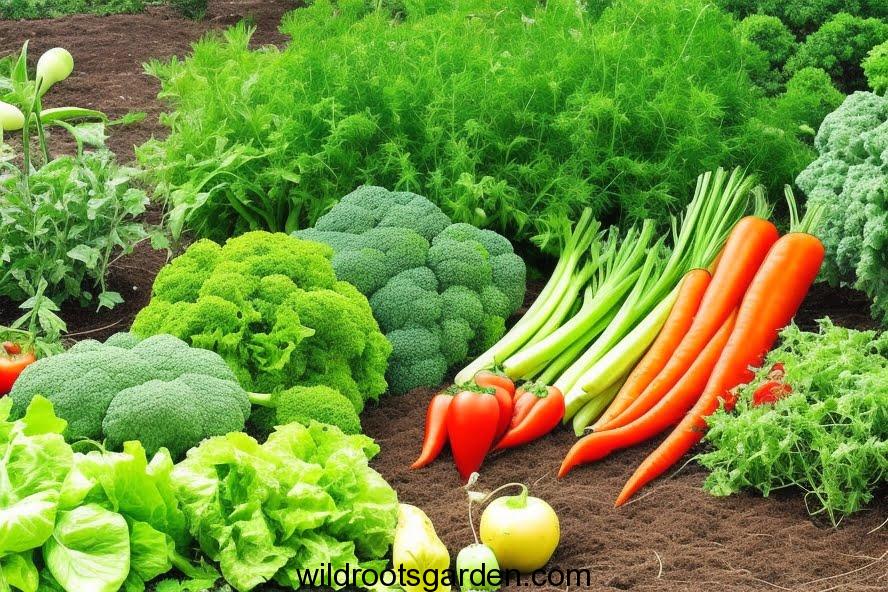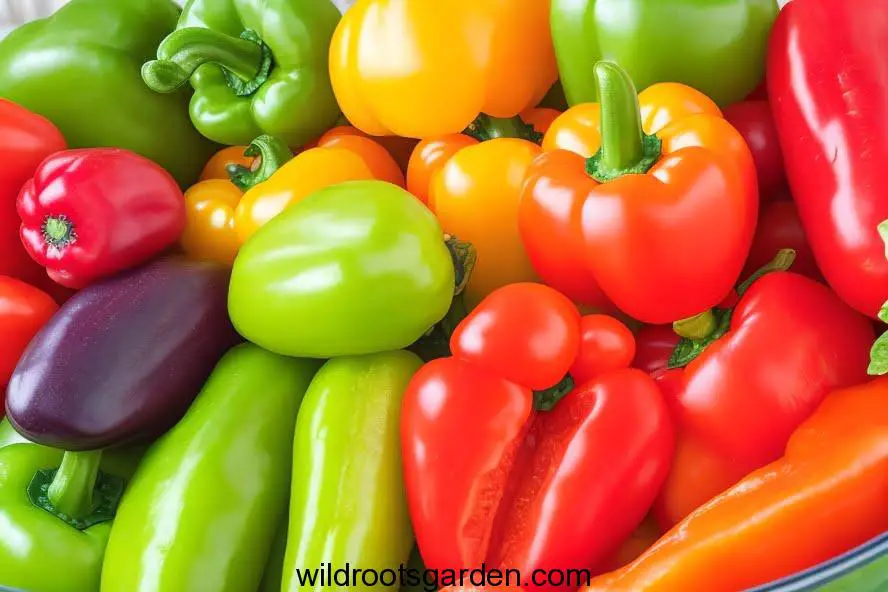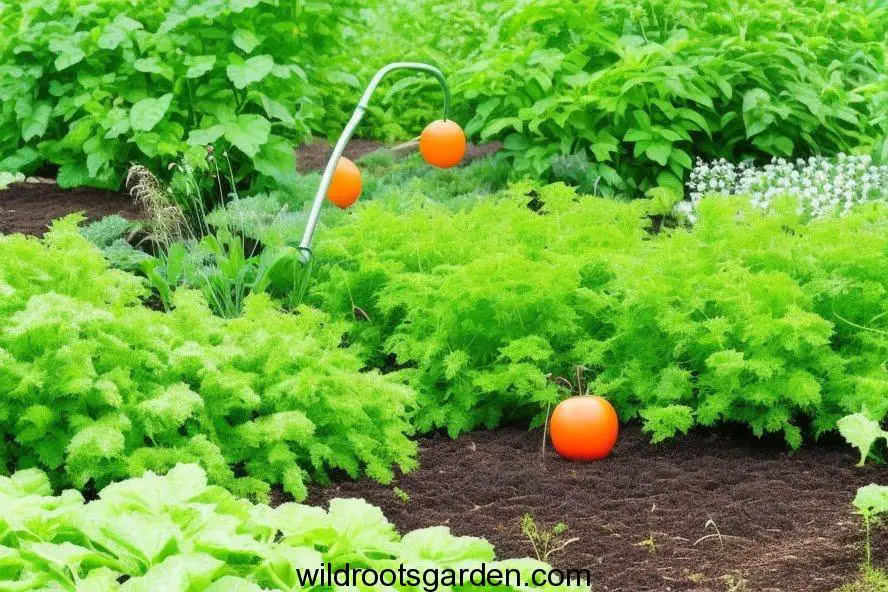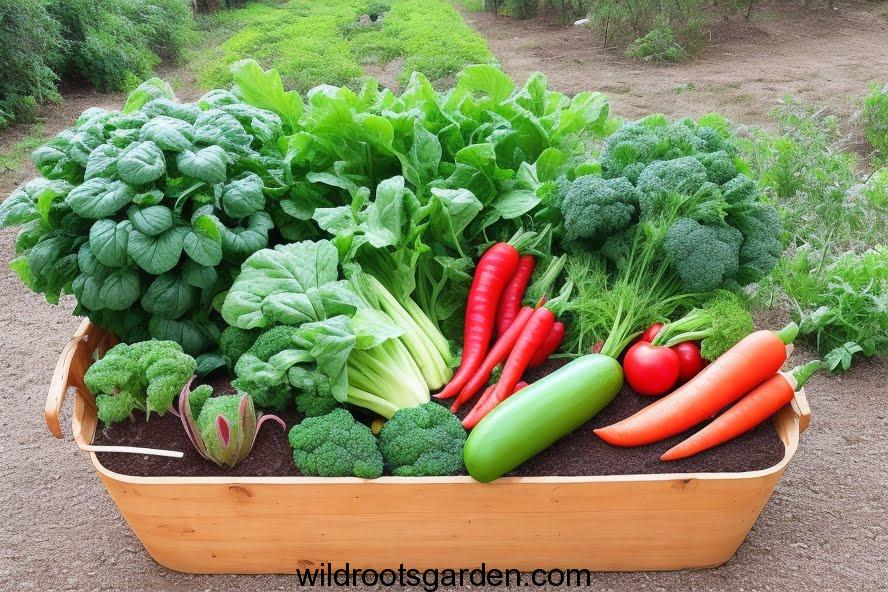All the Veggies to Go with My Garden. In today’s health-conscious world, there’s an increasing emphasis on incorporating fresh and nutritious vegetables into our daily diets. Gardens have become a sanctuary for enthusiasts seeking to grow their own produce, fostering a deeper connection with nature and the food they consume. “All the Veggies to Go with My Garden” delves into the fascinating realm of vegetable gardening, exploring the plethora of vibrant and nutrient-rich options available to cultivate right at home.
Both rookie and experienced gardeners can benefit from this comprehensive reference on vegetable gardening, which includes a variety of vegetables suitable for different climates and growth environments. This guide will leave you motivated and equipped to create a diverse and prolific garden of your own, ranging from more unusual plants like purple carrots and rainbow chard to classic mainstays like tomatoes, cucumbers, and lettuce. Discover how to cultivate a healthy, sustainable garden that not only satisfies your palate but also nourishes your body and soul. Experience the pleasures of harvesting your vegetables at the peak of their freshness and flavor. Go out on a journey to cultivate, look after, and benefit from your very own vegetable garden in “All the Veggies to Go.
Importance of Veggies in a Garden

Having a wide variety of veggies in your garden has many advantages. First of all, they enhance the aesthetics of your outdoor environment by adding color and vibrancy. Vegetables also help you live more sustainably by lowering your carbon footprint and encouraging self-sufficiency. A vegetable garden can also be tended to as a therapeutic and stress-relieving hobby that gives one a sense of accomplishment.
Choosing the Right Veggies for Your Garden
When selecting the vegetables to grow, it’s essential to consider your local climate, soil conditions, and available space. Opt for varieties that thrive in your region and are suitable for the size of your garden. This ensures optimal growth and a bountiful harvest. Now, let’s explore some popular veggies to include in your garden.
Leafy Greens: A Healthy Addition
Leafy greens, such as spinach, kale, and lettuce, are nutritional powerhouses. They are rich in vitamins A, C, and K, as well as iron and fiber. These veggies are relatively easy to grow and can be harvested multiple times throughout the season, providing a continuous supply of fresh greens for salads, sandwiches, and smoothies.
Root Vegetables: Underground Delights
Beets, radishes, and other root vegetables are renowned for their earthy flavors and vivid colors. They are a fantastic option for gardeners with little space and do well in well-drained soil. These vegetables offer a boost of nutrients and a pleasant crunch whether eaten raw, roasted or added to stews and soups.
Cruciferous Vegetables: The Nutritional Powerhouses
The high nutritional value of cruciferous vegetables including broccoli, cauliflower, and cabbage is well known. They have nutrients, vitamins, and antioxidants that maintain a strong immune system and may guard against some cancers. These vegetables can be produced in both the spring and fall seasons and prefer chilly temperatures, making them useful complements to your garden.
Colorful and Flavorful Bell Peppers

Bell peppers are available in a range of vivid hues, such as red, yellow, and green. They give food a sweet and tart flavor while being high in vitamin C. Bell peppers need lots of sunlight to grow well in warm climes. They can be grilled, stuffed, or used to salads, stir-fries, and other dishes to improve the flavor and nutrient content of any dish.
Versatile Tomatoes for Every Dish
Tomatoes are a staple in many kitchens due to their versatility and incredible flavor. They come in different shapes, sizes, and colors, offering endless possibilities for culinary creations. From juicy slicers to sweet cherry tomatoes, there’s a tomato variety for every preference. They can be used in salads, sauces, soups, and even as a standalone snack.
Sweet and Crunchy Cucumbers
Cucumbers are refreshing and hydrating vegetables that add a cool and crisp element to any dish. They thrive in warm weather and require consistent watering. Cucumbers can be enjoyed fresh in salads, pickled for a tangy twist, or transformed into refreshing summer drinks.
Zesty Zucchini and Yellow Squash
Zucchini and yellow squash are summer favorites that grow abundantly and are incredibly versatile. They can be sautéed, grilled, baked, or even spiralized into noodles. These veggies are excellent sources of vitamins A and C and can be used in both savory and sweet recipes.
Herbs for Added Flavor
Don’t forget to include herbs in your garden to enhance the flavor of your culinary creations. Herbs like basil, parsley, rosemary, and mint provide a burst of freshness and aroma. They can be grown in containers or directly in the ground and are perfect for seasoning soups, sauces, and marinades.
Managing Pests and Diseases in the Garden

Addressing potential pest and disease problems is essential to ensuring a flourishing vegetable crop. Infestations can be avoided by implementing organic pest control strategies including companion planting and using natural predators. Check your plants frequently for disease symptoms and take the necessary precautions, such as good sanitation practices and crop rotation, to reduce the risk.
Harvesting and Preserving Your Veggies
To get the best flavor and nutrients out of your vegetables, you must know when and how to pick them. Each type of vegetable has unique ripeness indicators, such as color, size, and texture. After harvesting, you can consume your fresh product right away or use preservation methods to extend its shelf life, such as canning, freezing, or dehydrating.
Delicious Recipes to Enjoy
It’s time to enjoy the flavors of your homegrown vegetables in delectable recipes after you’ve picked them. There are several options, from flavorful salads to filling veggie soups. Let your culinary imagination show by experimenting with recipes that use your recently picked veggies.
***
As you cultivate your vegetable garden, you’ll not only witness the fruits of your labor but also experience a deeper connection to the natural world. “All the Veggies to Go with My Garden” reminds us of the beauty and fulfillment that comes from growing our own food. By taking charge of our vegetable plots, we embrace a sustainable and wholesome lifestyle, contributing positively to our health and the environment.
So, whether you’re a green-thumb veteran or a budding enthusiast, let your garden become a sanctuary where you can escape the hustle of everyday life and embrace the wonders of nature. As you embark on this journey, remember that the possibilities are endless, and your veggie patch can transform into an abundant haven filled with colorful and nutritious delights.
May your garden flourish with the freshest produce, offering you a taste of true accomplishment and the pleasure of savoring the fruits of your labor. Happy gardening!
FAQs
1. How much space do I need to start a vegetable garden?
Even a small area, such a balcony or windowsill, can be used for container gardening to establish a food garden. If your backyard is bigger, though, you can set out a distinct area for your vegetable beds.
2. What are some low-maintenance vegetables for beginners?
For new gardeners, radishes, lettuce, Swiss chard, and bush beans are some low-maintenance veggies. These plants are relatively simple to grow and don’t need much care.
3. How often should I water my vegetable garden?
The amount of irrigation required will vary depending on the climate, the type of soil, and the particular requirements of the veggies you are growing. In order to stimulate the roots of the plants to grow deeper, it is typically advised to water deeply but less regularly.
4. Can I grow vegetables indoors?
Yes, you can grow certain vegetables indoors with the help of grow lights or by placing them near a sunny window. Leafy greens, herbs, and microgreens are some of the vegetables that can thrive indoors.
5. Are organic gardening practices necessary for growing vegetables?
Organic gardening practices prioritize the use of natural methods and materials, minimizing the reliance on synthetic pesticides and fertilizers. While not mandatory, organic gardening promotes environmental sustainability and can result in healthier produce.

